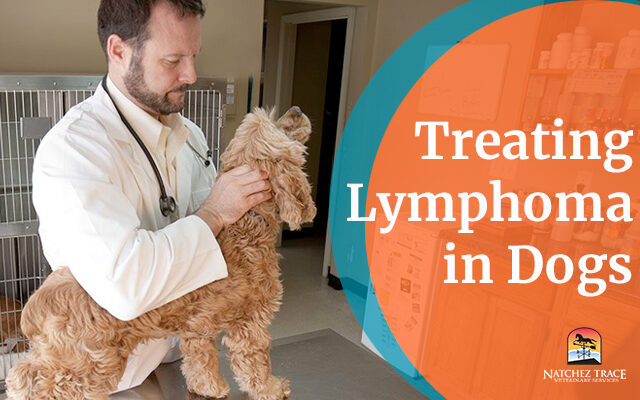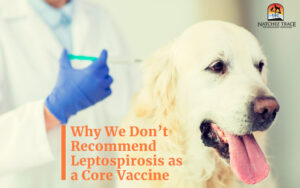At Natchez Trace Veterinary Services, we are experienced and dedicated to treating lymphoma in dogs, offering exceptional services from our expert veterinarians and staff.
Dog lymphoma occurs in about 50% of dogs who live over the age of ten, so we must pay close attention to our aging pet’s health.
At NTVS, we genuinely care for your pet and value your decisions as the pet owner.
Watch this video as Dr. Smith explains what you should do when your dog has lymphoma:
We offer a variety of treatment options, so your pooch is given the best possible medical care available.
What is Dog Lymphoma?
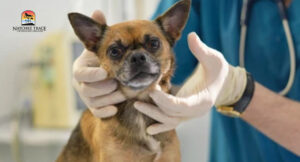 Lymphoma is a cancer formed from the malignant transformation of lymphocytes. It starts in the lymph nodes when immune cells found in the blood and lymph tissues start turning virulent.
Lymphoma is a cancer formed from the malignant transformation of lymphocytes. It starts in the lymph nodes when immune cells found in the blood and lymph tissues start turning virulent.
This illness can attack canines of any age, gender, and breed. It usually affects dogs in the later years of their life.
For example, let’s say your buddy, Charlie, comes across a virus.
What will happen next?
If Charlie has a strong immune system, he can fend them off. It is when his lymph nodes are weak that his immune cells cannot take on the attack.
After all, the lymphatic system is dedicated to filtering organic wastes, microbes, and other debris that make their way into the body.
Dog lymphoma happens when any part of the lymphatic system becomes dangerously cancerous. The exact cause of this disease is unknown, but the outcome is notoriously widespread.
Lymphoma cancer is common in dogs and will most likely require extensive treatment, depending on the level of severity. If not treated on time, it can lead to early death.
The affected areas can begin from lymphoid tissues such as your dog’s thymus, lymph nodes, spleen, or bone marrow. There are also cases where the disease will spring from other organs like the bone, spinal cord, liver, and even skin.
We must always be vigilant when it comes to our pet’s condition.
Signs of Dog Lymphoma
Cancer can happen any time.
One day Charlie is all happy and active, the next thing you know he’s whining in pain and exhaustion by the corner.
Here are signs your pet might be infected with dog lymphoma.
1. Anorexia
 Anorexia occurs when dogs lose appetite and simply will turn their heads away, even when you give them their favorite kibble! In some cases, they may try to eat but it is not enough to keep them healthy. That is partial anorexia. Report any of these to your vet!
Anorexia occurs when dogs lose appetite and simply will turn their heads away, even when you give them their favorite kibble! In some cases, they may try to eat but it is not enough to keep them healthy. That is partial anorexia. Report any of these to your vet!
2. Lethargy
 Canines love to run because they have the energy for it; however, lethargy is a common occurrence. In most cases, your dog might just be coming down with a bug. Would you risk not knowing the root cause of his tiredness though?
Canines love to run because they have the energy for it; however, lethargy is a common occurrence. In most cases, your dog might just be coming down with a bug. Would you risk not knowing the root cause of his tiredness though?
Make sure it’s not caused by dog lymphoma by contacting your veterinarian.
3. Fever
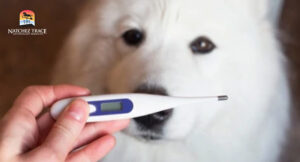 When it comes to your four-legged besties, temperature takes on a different range.
When it comes to your four-legged besties, temperature takes on a different range.
Fever in newborn puppies is relatively lower and dependent on various factors compared to adult dogs which is anything higher than 102.5 degrees Celsius. Never risk their health and ask your vet for assurance.
4. Weight Loss
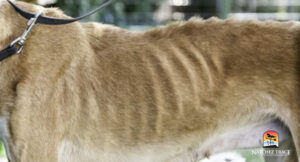 You know your pet best! If he needs to lose weight, then it’s all good.
You know your pet best! If he needs to lose weight, then it’s all good.
What you need to look out for is an unplanned weight loss, especially when it spirals down to approximately 10% of his normal body weight. Lymphoma can lead to weight loss due to several reasons. Let your vet know at once!
5. Melena
 With melena, you need to remember two words: “black” and “tarry.” When your dog’s poop comes out black and tarry, often sticky, it could mean the presence of blood and enzymes extracted from the gastrointestinal bleeding of your pet.
With melena, you need to remember two words: “black” and “tarry.” When your dog’s poop comes out black and tarry, often sticky, it could mean the presence of blood and enzymes extracted from the gastrointestinal bleeding of your pet.
A dark stool is a sign of digested blood mixed in the feces, and this could spell dog lymphoma if left unchecked.
6. Vomiting
 Sometimes, you need Charlie to expectorate. In most cases though, regurgitating is not a good sign. Growing tumors caused by lymphoma will force your poor pooch to vomit, so be aware and wary.
Sometimes, you need Charlie to expectorate. In most cases though, regurgitating is not a good sign. Growing tumors caused by lymphoma will force your poor pooch to vomit, so be aware and wary.
7. Diarrhea
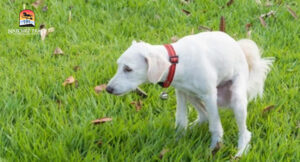 Diarrhea is caused by numerous factors. When stools come out watery, dark, and offensively malodorous, there is the possibility of gastrointestinal lymphoma.
Diarrhea is caused by numerous factors. When stools come out watery, dark, and offensively malodorous, there is the possibility of gastrointestinal lymphoma.
8. Increased thirst and urination
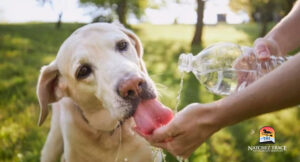 Hypercalcemia or an elevated level of blood calcium brought about by canine lymphoma can lead to excessive thirst which then leads to excessive urination. Keep an eye on your dog and have your vet take a look before things turn too drastic.
Hypercalcemia or an elevated level of blood calcium brought about by canine lymphoma can lead to excessive thirst which then leads to excessive urination. Keep an eye on your dog and have your vet take a look before things turn too drastic.
9. Difficulty breathing
 The clearest manifestation of lymphoma is difficulty in breathing. This is the consequence of either or both accumulating fluid and/or growing masses of tumor propagating within the chest.
The clearest manifestation of lymphoma is difficulty in breathing. This is the consequence of either or both accumulating fluid and/or growing masses of tumor propagating within the chest.
Always take these matters seriously and inform your vet of such disturbing incidents.
Treating Lymphoma in Dogs
Can you treat lymphoma in dogs?
At NTVS, we strive to educate you on all of your possible treatment options so you can always choose the best for your pet!
Since this disease will affect your loved ones entirely, it is only natural for us to balance this with a treatment that will completely tackle the problem.
So, how to treat lymphoma in dogs?
1. Chemotherapy
 This has always been the top contender to combat cancer. Why?
This has always been the top contender to combat cancer. Why?
For the simplest and most secure answer- it often works.
Chemotherapy’s expert blend of powerful chemicals gives it the ability to destroy cancer cells in dogs. It accounts for the complete remission of about 80% of canines in the U.S. suffering from lymphoma.
- Single-Agent Chemotherapy
As the name suggests, single-agent chemotherapy contains only a single regimen that focuses on one particular problem at a time. It works wonders in minimizing toxicity, especially when there is a need for focused treatment.
If, however, your goal is extended remission, steer clear of this therapy.
- COP Protocol
This alternative chemotherapy is made up of cyclophosphamide, vincristine, and prednisone.
COP protocol is fairly non-toxic and more reasonably priced in terms of treating dog lymphoma. A recorded 70% of canines went into complete remission after undergoing this therapy.
Certain procedures and dosages depend on the patient’s cancer level.
Feel free to ask your vet any questions and be religious in the treatment selection process.
- Multi-agent CHOP Protocols
CHOP is a chemotherapy regimen that veterinarians deem as the “Gold Standard” when it comes to treating dog lymphoma. The program works best in fighting different stages of cancer making the remedy more expensive than most.
This multi-agent treatment is named for its ability to attack cancerous cells from different directions, making it the most effective way to help your dog. It is a combination of 4 different drugs: Cyclophosphamide, Doxorubicin Hydrochloride, Vincristine Sulfate, and Prednisone.
Talk with us for a personalized plan perfect for your beloved pet’s distinct condition. Since numerous factors will come into play, you must stay true to the provided regimen and adhere to protocols.
2. Monoclonal Antibodies (mAb)
 Antibodies are proteins produced by the immune system to ambush substances that the body is unfamiliar with. The substances can be any fungi, bacteria, viruses, or other kinds of infectious organisms.
Antibodies are proteins produced by the immune system to ambush substances that the body is unfamiliar with. The substances can be any fungi, bacteria, viruses, or other kinds of infectious organisms.
Monoclonal Antibodies are more of a maintenance or continuous therapy rather than the main event. It functions as a training program for white blood cells to better recognize and destroy cancer cells that make their way into your dog’s system.
Depending on the cancer level, monoclonal antibodies are effective in treating canine lymphomas.
Ask your vet for the right combination of treatments together with mAb to give your pet a longer, healthier life!
3. Max’s Formula
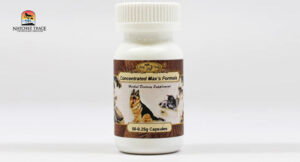 Nodules, or lumps, may appear in certain body parts of your dog when they suffer from lymphoma. To counter this occurrence, Jing Tang Max’s Formula works to soften the nodules as well as propel your amazing pet’s natural ability to remove them.
Nodules, or lumps, may appear in certain body parts of your dog when they suffer from lymphoma. To counter this occurrence, Jing Tang Max’s Formula works to soften the nodules as well as propel your amazing pet’s natural ability to remove them.
Targeting specific swellings aids in the overall treatment of your pet.
Max’s Formula is formulated to make feeding easier. It usually comes in powder form that can be mixed with your canine’s savory meal. Concentrated capsules and tea pills are also readily available.
4. Stasis Breaker
 Blood stasis, in Traditional Chinese Medicine, is the accumulation of blood due to concerns that disrupt and slow circulation. Lymphoma causes your dear pet’s body parts to swell. This may lead to blood stasis which can be fatal.
Blood stasis, in Traditional Chinese Medicine, is the accumulation of blood due to concerns that disrupt and slow circulation. Lymphoma causes your dear pet’s body parts to swell. This may lead to blood stasis which can be fatal.
Stasis Breaker lives up to its name as it works to break blood stasis!
This helps your darling pooch soften the hardened fluid, giving way to good circulation and the flushing of harmful masses along the way.
Herbal authorization by your veterinarian is required.
5. Vitamin B12 Injections
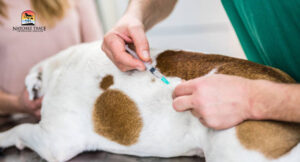 Charlie needs Vitamin B12 for iron absorption. Iron helps in the formation of red blood cells which carries oxygen and nutrients throughout your dog’s body.
Charlie needs Vitamin B12 for iron absorption. Iron helps in the formation of red blood cells which carries oxygen and nutrients throughout your dog’s body.
Dog lymphoma in the gastrointestinal tract can induce a shortage of Vitamin B12. This will weaken your pet’s immune system, forcing his body into a state of anemia.
We offer Vitamin B12 injections to alleviate your precious canine’s iron deficiency and strengthen his ability to fight off infections.
6. Winstrol
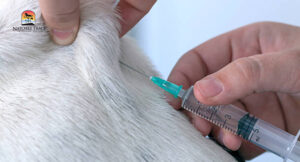 Winstrol is an anabolic steroid. As such, it is developed to improve your pet’s red blood cells while it works to strengthen his bodily tissues.
Winstrol is an anabolic steroid. As such, it is developed to improve your pet’s red blood cells while it works to strengthen his bodily tissues.
Since lymphoma can leave your pet ill and weak, this injectable treatment is perfect for revitalizing his poor health.
With the proper prescription from your vet, you can bring life back to your ailing dog!
7. Neoplasene
Neoplasene is extracted from bloodroot, an herbal plant that serves to eradicate growing tissues and tumors in dogs. It also works to kill cancer cells without any influence on the healthy ones.
This popular cancer treatment is easy to administer with the correct method.
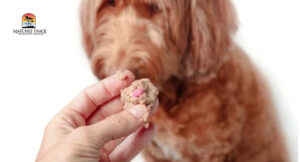 You can mix your pet’s dose of Neoplasene with a canned PET | TAO Formula or any home-cooked food of your choice.
You can mix your pet’s dose of Neoplasene with a canned PET | TAO Formula or any home-cooked food of your choice.
There are varieties of treatments to choose from, so communicate well with your vet.
We know that every pet is an individual. Hence, we offer Individual Options at NTVS!
Are There Chemotherapy Side Effects?
Since chemotherapy is the hailed treatment to fight cancer, you may wonder if side effects can happen.
To be honest, side effects are to be expected!
Most dogs will take time to get used to the new state the treatments will leave them in.
Veterinarians are aware of the possibility of side effects.
We will let you know!
- Lethargy
 Chemotherapy can push your brave pet to repair the damage in his body. This continuous drive may leave him fatigued.
Chemotherapy can push your brave pet to repair the damage in his body. This continuous drive may leave him fatigued.
We will provide you with the right supplements as required.
- Hair loss in some breeds
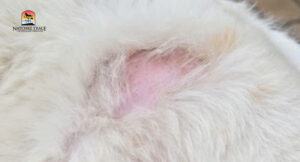 Chemotherapy actively annihilates rapidly growing cells like the cancerous tumors destroying your canine best friend.
Chemotherapy actively annihilates rapidly growing cells like the cancerous tumors destroying your canine best friend.
Just like you, your darling dog’s hair follicles contain one of the fastest-growing cells in the body. If Charlie’s scalp is sensitive, some drugs in certain chemo procedures may compromise hair growth.
- Bone Marrow Suppression
 Cancer cells can rapidly divide but so do most of your pet’s normal cells. This leads to chemotherapy targeting both types, depending on the specific drug and dosage.
Cancer cells can rapidly divide but so do most of your pet’s normal cells. This leads to chemotherapy targeting both types, depending on the specific drug and dosage.
Bone marrow is the factory of cells. When suppressed, your dog’s oxygen circulation and immune system weaken.
Since this is usually an expected outcome, we have available remedies to help you.
- Nausea & Vomiting
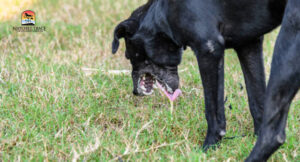 The risk of your pet feeling nauseous and vomiting rests on your dog’s response to certain types of chemotherapy and specific dosages.
The risk of your pet feeling nauseous and vomiting rests on your dog’s response to certain types of chemotherapy and specific dosages.
Usually, these reactions do not last long.
If needed, we will send you home with anti-nausea medication for your pet.
- Diarrhea
 “No pain, no gain” holds true for chemotherapy.
“No pain, no gain” holds true for chemotherapy.
Chemo drugs cannot differentiate healthy cells from cancerous ones. Thus, they tend to damage even the cells that work within your dog’s digestive tract.
The flushing of these dead cells can cause diarrhea.
- Loss of Appetite
 Inappetence is the result of your pet’s response to his medical regimen. This can also be caused by a combination of different side effects.
Inappetence is the result of your pet’s response to his medical regimen. This can also be caused by a combination of different side effects.
Your vet will give you options to improve your dog’s appetite. Winstrol may be one of your choices.
Side effects can be limited with the right techniques and medical plan.
If the side effects continue to persist despite additional therapy, talk with us.
We treat you and your darling pet as family, so we are adamant about serving you both with the best possible care available.
We will provide you with adequate coping strategies for your beloved canine.
What Should You Expect as a Pet Owner?
The number of dogs succumbing to cancer is alarmingly high. As a pet owner, it is vital to stay on the safer side of things.
If your beloved canine begins to show symptoms of lymphoma, take them straight to your vet.
- Physical Exam
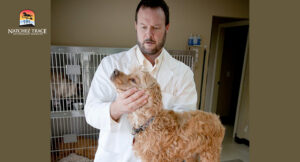 Dog lymphoma is a serious illness.
Dog lymphoma is a serious illness.
You will need to take your pet to a vet and go through several physical exams to determine the presence of cancer cells.
The number of tests your dog needs to go through will depend on what state he’ll be in.
- Individual Factors
 We treat each of our patients as an individual. Even purebred siblings are different.
We treat each of our patients as an individual. Even purebred siblings are different.
The efficacy of certain drugs differs. Those that are effective at first may even stop working. As a result, survival times will greatly vary.
The overall response of any dog will also depend on individual factors ranging from breed, age, weight, diet, environment, and many more.
Charlie might suffer the side effects of chemo with diarrhea and hair loss, while other canines only go through minor backlash.
- Budget
We understand that a major problem for pet parents in dealing with their dog’s lymphoma is the cost.
Circumstances such as the distance between your location and your vet, your dog’s weight, the stage of cancer he’s in, particular drugs required, your pet’s reaction to the treatment, the number of times you need to return, and a lot more will come into play.
 You might need to think about transportation costs too. What’s more, you also have to worry about keeping your pet’s daily diet healthy!
You might need to think about transportation costs too. What’s more, you also have to worry about keeping your pet’s daily diet healthy!
Be honest with your vet about your financial situation and ask for a detailed estimate.
We always offer the most cost-effective solutions possible. If a cheaper and still effective alternative exists, we’ll help you pick that one.
We will work everything out within your budget!
- Home Administration
 To help you save energy and finance, we may suggest medicines that can be administered at home. Of course, we will thoroughly teach you how to do this.
To help you save energy and finance, we may suggest medicines that can be administered at home. Of course, we will thoroughly teach you how to do this.
This will highly depend on your willingness and comfort.
For instance, chemo drugs are mostly toxic. Strict and precise procedures are mandatory. There are also cases when personal protective equipment is essential.
If you don’t feel confident, we can always do these procedures for you at the clinic.
Additionally, we may also propose dietary plans for you to follow at home if you are open to preparing home-cooked meals for your pet.
- Relapse
 You have to prepare yourself for the possibility of a relapse.
You have to prepare yourself for the possibility of a relapse.
As devastating as it sounds, dogs within the remission stage of treatment can spiral back down to their disease. The new set of emerging cancer cells is called tumor clones.
Lymphoma tumor clones learn to resist chemotherapy; however, second remission is very much achievable!
- Regular Check-ups
Regular check-ups are critical during the stages of treatment.
We need to constantly check your pet’s response to the selected therapy. Changes in his well-being and diet also need to be reciprocated.
We make it our responsibility to ensure our patients continue to get better after their treatments. Once they get healed, we put great care into making sure they continue to stay in good health!
- Choice
The choice is completely yours. We respect your liberty as the pet parent.
Refuse what you do not believe to be good for your pet. Accept when you know the treatments we offer will work for your beloved dog.
 Remember, you have the right to decide on your pet’s care plan. We can only explain, educate, and guide you.
Remember, you have the right to decide on your pet’s care plan. We can only explain, educate, and guide you.
Rest assured, we are always with you from step one until however many more steps you are prepared to go.
Each available option will be clearly explained to you so you can go through the selection with confidence.
Your dog’s condition, your depth of understanding, and your willingness to go through all the needed steps will be prioritized and taken with the utmost consideration.
End Results of Dog Lymphoma Treatment at NTVS
Lymphoma is a systematic disease and we treat it as such. Our mainstay of treatment for dog lymphoma is chemotherapy. CHOP is highly recommended together with herbal therapy.
Certainly, we will do everything we can to help your pet overcome the disease.
Let us know what role you want us to play. We can do as much or as little as you want.
Thank you!

